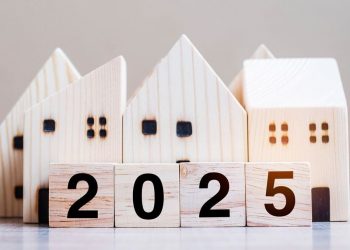 Freddie Mac recently released its Multi-Indicator Market Index(SM) (MiMi(SM)) for February showing the U.S. housing market overall recovering at a slightly slower pace from the previous month. However, more than half of all states, as well as more than half of the top 50 metro areas, continue to show an improving trend. Eleven states and the District of Columbia, and four metro areas, are in their stable range of housing activity, unchanged from last month. One year ago, seven states and the District of Columbia, and zero metro areas, were in their stable range.
Freddie Mac recently released its Multi-Indicator Market Index(SM) (MiMi(SM)) for February showing the U.S. housing market overall recovering at a slightly slower pace from the previous month. However, more than half of all states, as well as more than half of the top 50 metro areas, continue to show an improving trend. Eleven states and the District of Columbia, and four metro areas, are in their stable range of housing activity, unchanged from last month. One year ago, seven states and the District of Columbia, and zero metro areas, were in their stable range.
“Despite a slowdown over the winter months, the housing market continues to show improvement in most states, although at a somewhat slower pace,” says Freddie Mac Chief Economist Frank Nothaft. “And while not all the MiMi indicators are trending in a better direction — in particular, home-purchase applications have weakened in many areas — gains in local employment and loan performance have really helped many markets across the country, especially those that were hardest hit. Outside of these areas we also are seeing positive improvement from the Carolinas and Tennessee as their local unemployment rates fall further.”
The national MiMi value stands at -3.11 points indicating a weak housing market overall and declining by 0.03 points from January to February. However, on a year-over-basis, the U.S. housing market has improved by 0.67 points, and the 3-month trend (+0.12 points) shows an improving housing market. The nation’s all-time MiMi low of -4.49 was in November 2010 when the housing market was at its weakest.
Eleven of the 50 states plus the District of Columbia are in their stable range of housing activity with North Dakota, Wyoming, the District of Columbia, Alaska, and Louisiana ranking in the top five. Wyoming moved up to the second place ranking. The District of Columbia declined one spot to third place.
Four of the 50 metro areas are stable and in range, San Antonio, Houston, New Orleans and Austin with the latter two switching between third and fourth place rankings.
The five most improving states month-over-month were South Carolina (+0.14), Louisiana (+0.7), Ohio (+0.07), Tennessee (+0.05) and Nevada (+0.07). From one year ago the most improving states remained unchanged: Florida (+1.87), Nevada (+1.65), California (+1.08), South Carolina (+0.96) and Texas (+0.93).
The five most improving metro areas month-over-month were Charlotte (+0.10), Columbus (+0.09), Nashville (+0.07), New Orleans (+0.07), and Las Vegas (+0.05) which tied with Memphis (+0.05) and Miami (+0.05). From one year ago the most improving metros remained unchanged: Miami (+2.33), Orlando (+1.91), Las Vegas (+1.64), Riverside (+1.60), and Tampa (+1.49).
Overall, in February, 28 of the 50 states plus the District of Columbia are improving based on their three month trend and 27 of the 50 metros are improving. Kansas City, St. Louis and Minneapolis metro area housing markets slipped in their three month trend after seeing declines in their purchase application activity and local employment picture.
MiMi monitors and measures the stability of the nation’s housing market, as well as the housing markets of all 50 states, the District of Columbia, and the top 50 metro markets. MiMi combines proprietary Freddie Mac data with current local market data to assess where each single-family housing market is relative to its own long-term stable range by looking at home purchase applications, payment-to-income ratios (changes in home purchasing power based on house prices, mortgage rates and household income), proportion of on time mortgage payments in each market, and the local employment picture. The four indicators are combined to create a composite MiMi value for each market. Monthly, MiMi uses this data to show, at a glance, where each market stands relative to its own stable range of housing activity. MiMi also indicates how each market is trending, whether it is moving closer to, or further away from, its stable range. A market can fall outside its stable range by being too weak to generate enough demand for a well-balanced housing market or by overheating to an unsustainable level of activity.
For more information, visit www.FreddieMac.com/mimi.










